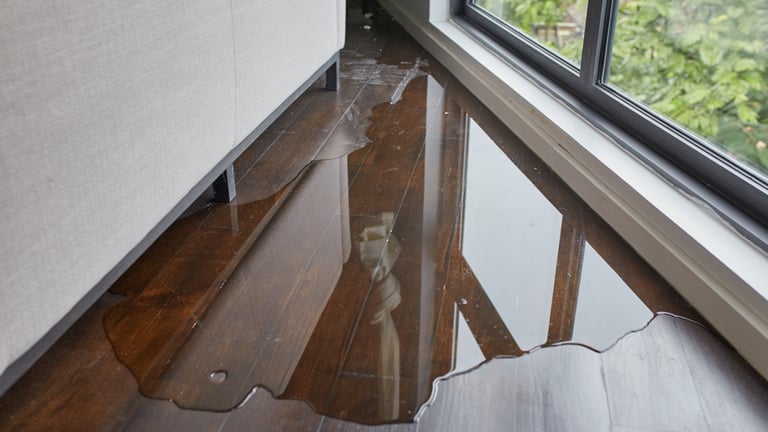Do's & Don'ts of Water Restoration.
Do's & Don'ts of Water Restoration.
Blog Article
We've uncovered this great article about What You Can Do At Home To Prevent Fire And Water Damage down the page on the internet and think it made perfect sense to talk about it with you on this site.

Water offers life, but water breach on some parts where it's not expected to be can result in damage and also hassle. It can peel off away the surface and deteriorate the product's foundation if the water leaks right into your structure. Mold and mildew and mildew likewise grow in a moist setting, which can be harmful for your as well as your family's health and wellness. On top of that, homes with water damages odor moldy and also old.
Water can originate from many sources like hurricanes, floodings, burst pipes, leaks, as well as drain concerns. If you have water damages, it's better to have a working understanding of security precautions. Right here are a couple of standards on just how to manage water damages.
Do Prioritize Residence Insurance Policy Insurance Coverage
Seasonal water damages can originate from floodings, seasonal rainfalls, as well as wind. There is likewise an incident of an abrupt flooding, whether it came from a malfunctioning pipe that instantly breaks into your house. To shield your home, obtain house insurance policy that covers both disasters such as natural disasters, and also emergencies like broken plumbing.
Do Not Neglect to Shut Off Energies
When disaster strikes and you remain in a flood-prone location, switch off the main electric circuit. Switching off the power avoids
When water comes in as water serves as a conductor, electric shocks. Don't neglect to shut off the primary water line valve as a method to prevent even more damage.
If the floodwaters are obtaining high, keep your furniture stable as they can move around and also create extra damages.
Do Keep Proactive and also Heed Climate Alerts
If you live in a location tormented by floodings, remain proactive and prepared at all times. Listen to the news and emptying warnings if you live near a body of water like a lake, river, or creek .
Don't Overlook the Roofing System
Your contractor must take care of the faulty gutters or any various other indications of damage or weakening. An examination will certainly avoid water from moving down your wall surfaces as well as soaking your ceiling.
Do Take Notice Of Little Leakages
There are red flags that can attract your attention and also suggest to you some damaged pipes in your house. Signs of red flags in your pipes include gurgling paint, peeling off wallpaper, water streaks, water spots, or trickling sounds behind the walls. Repair service and inspect your plumbing repaired prior to it results in enormous damage to your home, finances, and a personal headache.
Do Not Panic in Case of a Burst Pipe
Timing is essential when it comes to water damage. If a pipeline ruptureds in your house, instantly shut off your major water shutoff to cut off the source and also stop even more damages. Call a respectable water damage restoration professional for support.
Water provides life, but water breach on some parts where it's not intended to be can result in damages and aggravation. In addition, residences with water damage smell moldy and also old.
Seasonal water damage can come from floodings, seasonal rainfalls, and wind. Indications of red flags in your pipes consist of bubbling paint, peeling off wallpaper, water streaks, water discolorations, or dripping audios behind the walls. If a pipeline bursts in your residence, promptly shut off your major water valve to reduce off the resource and protect against more damages.
Some Do's & Don't When Dealing with a Water Damage
DO:
Make sure the water source has been eliminated. Contact a plumber if needed. Turn off circuit breakers supplying electricity to wet areas and unplug any electronics that are on wet carpet or surfaces Remove small furniture items Remove as much excess water as possible by mopping or blotting; Use WHITE towels to blot wet carpeting Wipe water from wooden furniture after removing anything on it Remove and prop up wet upholstery cushions for even drying (check for any bleeding) Pin up curtains or furniture skirts if needed Place aluminum foil, saucers or wood blocks between furniture legs and wet carpet Turn on air conditioning for maximum drying in winter and open windows in the summer Open any drawers and cabinets affected for complete drying but do not force them open Remove any valuable art objects or paintings to a safe, dry place Open any suitcases or luggage that may have been affected to dry, preferably in sunlight Hang any fur or leather goods to dry at room temperature Punch small holes in sagging ceilings to relieve trapped water (don't forget to place pans beneath!); however, if the ceiling is sagging extremely low, stay out of the room and we'll take care of it DO NOT:
Leave wet fabrics in place; dry them as soon as possible Leave books, magazines or any other colored items on wet carpets or floor Use your household vacuum to remove water Use TV's or other electronics/appliances while standing on wet carpets or floors; especially not on wet concrete floors Turn on ceiling fixtures if the ceiling is wet Turn your heat up, unless instructed otherwise

I hope you enjoyed reading our section about Safety Tips To Prevent Fire And Water Damage. Thank you so much for taking the time to read our blog. Feel free to take the opportunity to promote this blog entry if you appreciated it. Bless you for your time. Visit us again soon.
Report this page